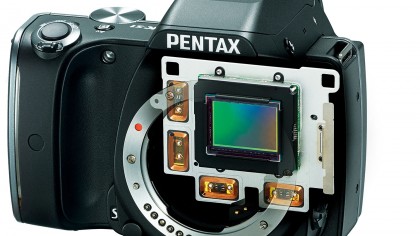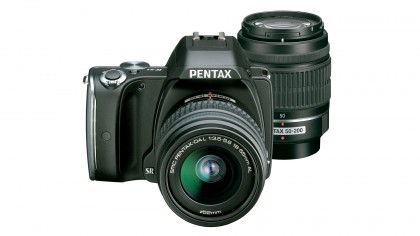TechRadar Verdict
Flashing lights and a body which is available in lots of different colours distract from what is actually a decently performing camera.
Pros
- +
No anti-aliasing filter
- +
Available in lots of different colours
- +
Good image quality
Cons
- -
Poor kit lens
- -
Boxy design
- -
No Wi-Fi
- -
No touchscreen
Why you can trust TechRadar
Despite the fact that Pentax does indeed make some very good DSLRs, it always plays second fiddle to the big names of Canon and Nikon.
It's possibly for this reason that in recent years, the company has tended towards gimmicks to try and shift units. Here with the K-S1, it's available in an array of bewildering colours, including a new "sweets" collection (yipee).
There's also a panel of lights on the front of the camera, which are supposedly designed to "guide" operations.
Ignoring the aesthetics, at its heart, the K-S1 actually has some very decent specifications and interesting technologies – especially for an amateur level camera. At its heart is a 20 million pixel CMOS sensor with a sensor-based shake reduction system. In principle, this will provide an image stabilising effect with any lens, and it does actually work very well.
This system is also used for the Pentax's unique 'anti-alias simulation' modes. The sensor itself has no anti-aliasing filter, which means slightly sharper fine detail but the risk (rare in practice) of moiré, or interference effects with very fine patterns and textures.

This is why most D-SLRs still use anti-aliasing, or 'low-pass' filters in front of the sensor. But the Pentax can simulate this effect with microscopic vibrations of the sensor during the exposure. You might never need it, but it's an interesting solution nonetheless.
Specifications
The K-S1's other specs are good too. It can shoot continuously at 5.4 frames per second and it has a maximum shutter speed of 1/6000sec. It has a proper pentaprism viewfinder with 100% coverage, where some rivals use a cheaper pentamirror design. The K-S1 also offers a selection of effects modes and a large array of digital filters – you can use these as you shoot, or apply them later using the camera's in-built raw conversion and image-editing tools.
Sign up for breaking news, reviews, opinion, top tech deals, and more.
There are 11 autofocus points, of which the nine in the centre are the more sensitive cross type points. On the back of the camera is a fixed 3 inch TFT LCD monitor, with a 921k dot resolution.
You can shoot in raw format, and one particularly useful thing about Pentax cameras is that its raw format is DNG, rather than a proprietary to the camera/manufacturer format, meaning that your software, whether that's Photoshop or another alternative, should already be able to read the files it outputs rather than having to wait for an upgrade.
As well as manual control, there's also aperture priority and shutter priority modes, scene modes and an effects mode which applies digital filters to your image, such as Bold Monochrome and Vintage Color.

A built-in flash is included with a Guide Number of 10, while the camera is also capable of Full HD 1080p video recording. You can edit photos within the camera, with the power to correct for moire patterning, resize and crop images.
There's no inbuilt Wi-Fi here, a feature which is becoming more and more common on other cameras. If you want to, you could purchase an additional Wi-Fi card for the memory card slot. Speaking of which, there's just one slot, and the camera accepts SD/SDHC/SDXC cards.

As Pentax has been making SLRs for quite some time, there's a huge range of lenses available, so those who had an old Pentax film camera might be tempted in by this digital version. It goes head to head with the likes of the Nikon D5300 and the Canon EOS 700D, both of which sit at the top end of their respective company's beginner ranges.

Amy has been writing about cameras, photography and associated tech since 2009. Amy was once part of the photography testing team for Future Publishing working across TechRadar, Digital Camera, PhotoPlus, N Photo and Photography Week. For her photography, she has won awards and has been exhibited. She often partakes in unusual projects - including one intense year where she used a different camera every single day. Amy is currently the Features Editor at Amateur Photographer magazine, and in her increasingly little spare time works across a number of high-profile publications including Wired, Stuff, Digital Camera World, Expert Reviews, and just a little off-tangent, PetsRadar.
